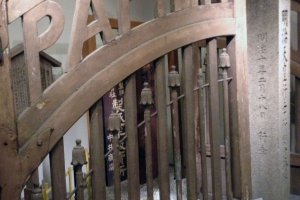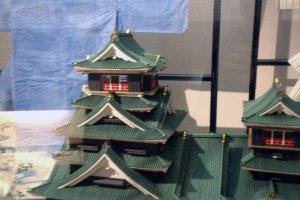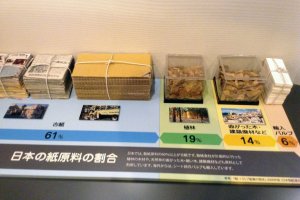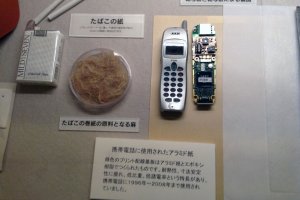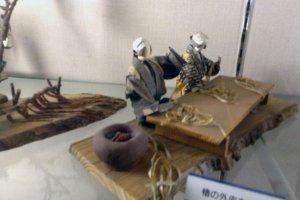I wouldn't describe myself as a paper enthusiast, but while on a trip to Tokyo, I found myself steps away from a museum specializing in paper with about 30 minutes of wait time until my friend arrived at the nearby station. With no harm besides the risk of a paper cut, I entered the museum not sure what to expect. The Paper Museum in Tokyo's Kita ward near Oji station was created just a few years after WWII in 1950. It has been in its current location of Asukayama Park since 1998. Let me start off by saying that 30 minutes in this museum does not do it justice.
The Paper Museum is four stories of…well paper. In fact, the museum covers everything about paper and has many interesting items that make you really question what paper can’t do. The museum covers the local and some world history of paper, its manufacturing, consumption, and recycling processes, its uses, and its products. While information signs are written in Japanese, you will receive a pamphlet and several booklets in English about the museum and the paper process, free of charge, at the front desk (after paying admission, of course). I would also like to point out there is a guest elevator, so even people with trouble using stairs will be able to use the museum. You start on the second floor of the museum. I recommend going up through the exhibition halls then stopping at the first floor for a quick peek before you depart. Let’s start the adventure.
The second floor is full of information about paper materials and the manufacturing process, with paper products scattered about. The center of the room is dominated by a paper manufacturing piece of equipment, with miniature models of mills, presses, etc. in the cases along the walls. The average visitor, even if he or she is Japanese, will probably be sufficed in looking at the pictures and products without worrying too much about the written information on this floor. Again, use your free booklets and pamphlet to learn more because almost everything is written there. Seeing cardboard boxes, tissues, books, and trading cards, I started realizing how much humans depend on paper. Continuing to the next floors I discovered how versatile paper really is.
Children and children at heart will surely enjoy the third floor. It was designed to teach children about paper and the importance of recycling. Interactive touch screens, cabinets hiding quiz answers or unique paper materials, and audio information make this floor very interactive. Great for families and also for couples as I saw. Then again, I had a lot of fun too trying to guess what material the paper I was touching was made of—until I learned it came from elephant’s feces. Moving on to the fourth floor.
The fourth floor details the history of paper and also has a special exhibit room which is included with admission. When I went, the special exhibit room held exquisite paper fans constructed with incredible care and detail. Unfortunately, no photography is allowed in the special exhibit room. Papyrus, Buddhist parchments, and traditional washi paper is displayed on the rest of the floor. More spectacular are the unbelievable made-from-paper products inside the upstairs cases. A paper castle, a kimono once worn by a famous kabuki actor, a teddy bear, an old style water bottle, and intricate paper dolls. Seeing is believing.
I finished my rushed trip with an elevator ride down to the first floor. On Saturday afternoons, you can make your own paper out of provided recycled milk cartons (free with admission). In a quiet corner rests aging signs and parts of a gate from old paper factories now lost, but remembered. If you still didn’t get enough paper you can check out the museum library or back to the second floor gift shop to bring paper products back home.
Are you a paper-lover and find yourself in Kochi prefecture? Make sure to check out the Ino Paper Museum!
You purchase your ticket at a vending machine at the front entrance. If you are in a learning mood, you may wish to opt for a discount ticket sold for the Paper Museum and two other nearby museums. Hand your ticket to the front counter and you are bombarded with a pamphlet and booklets about the museum and the paper process from raw material to consumption and recycling.


